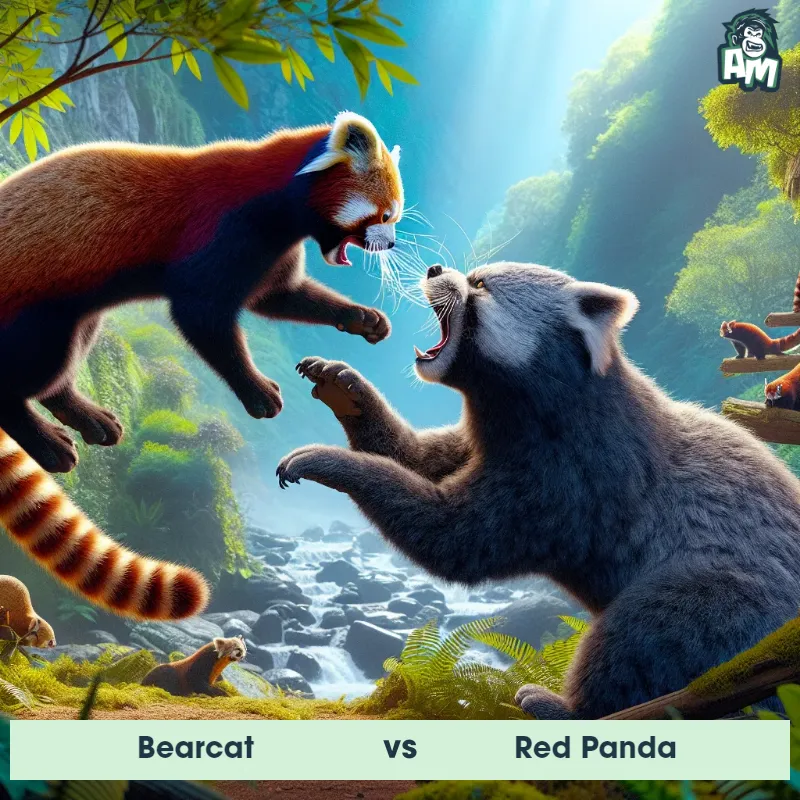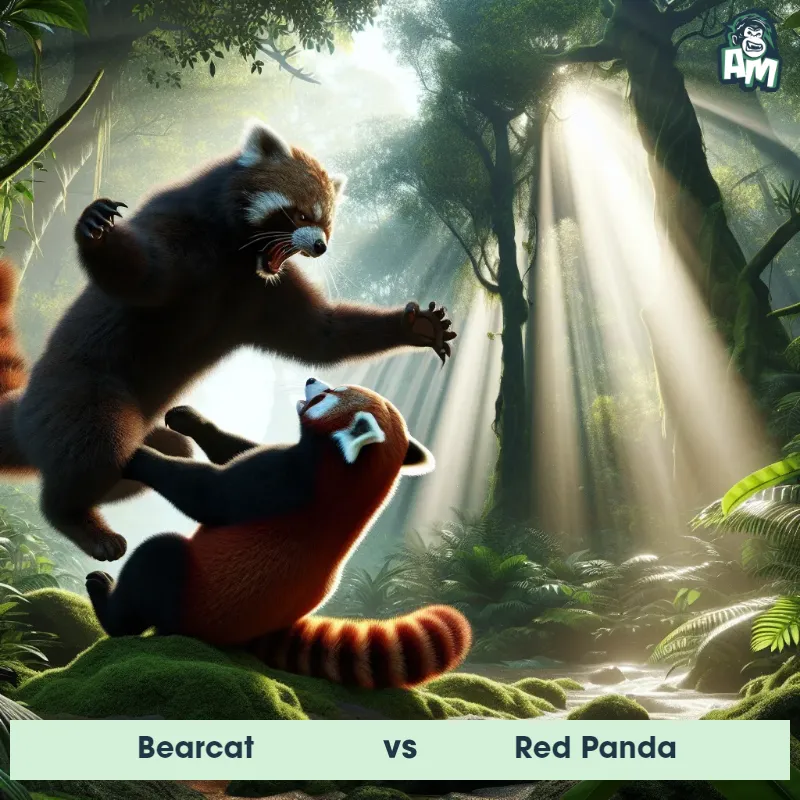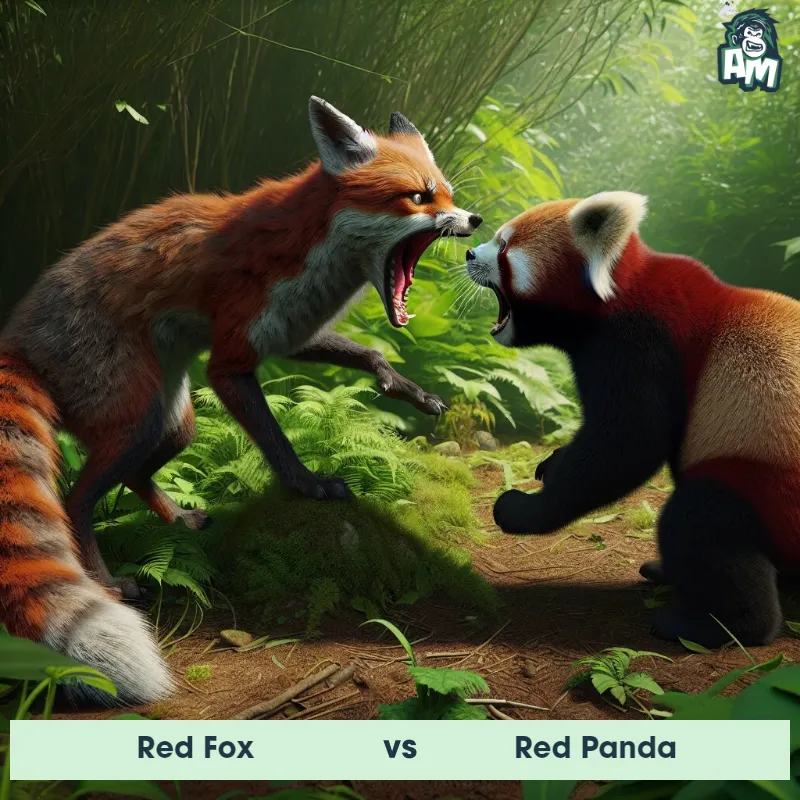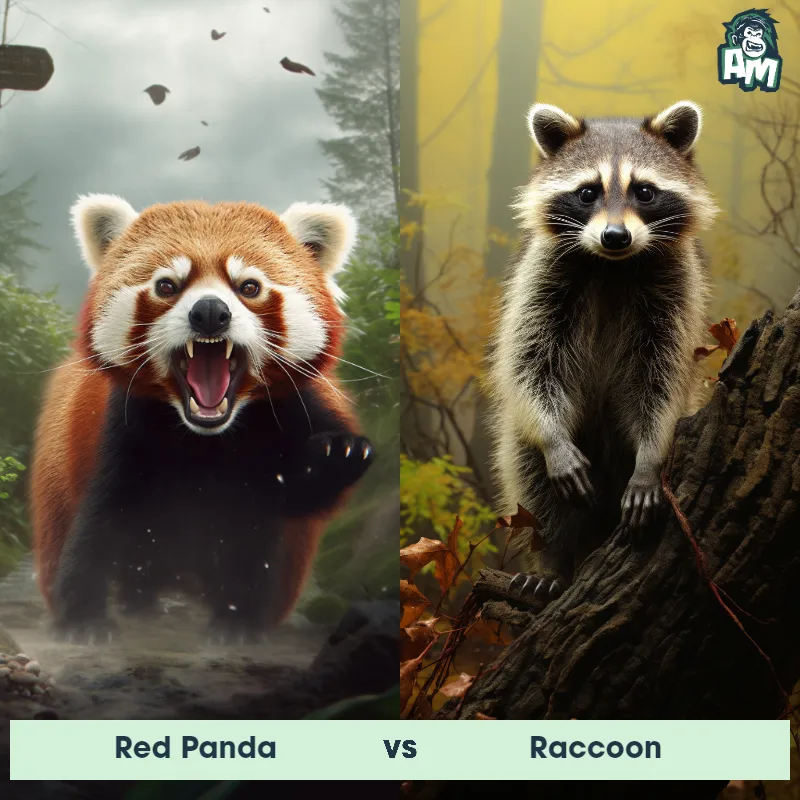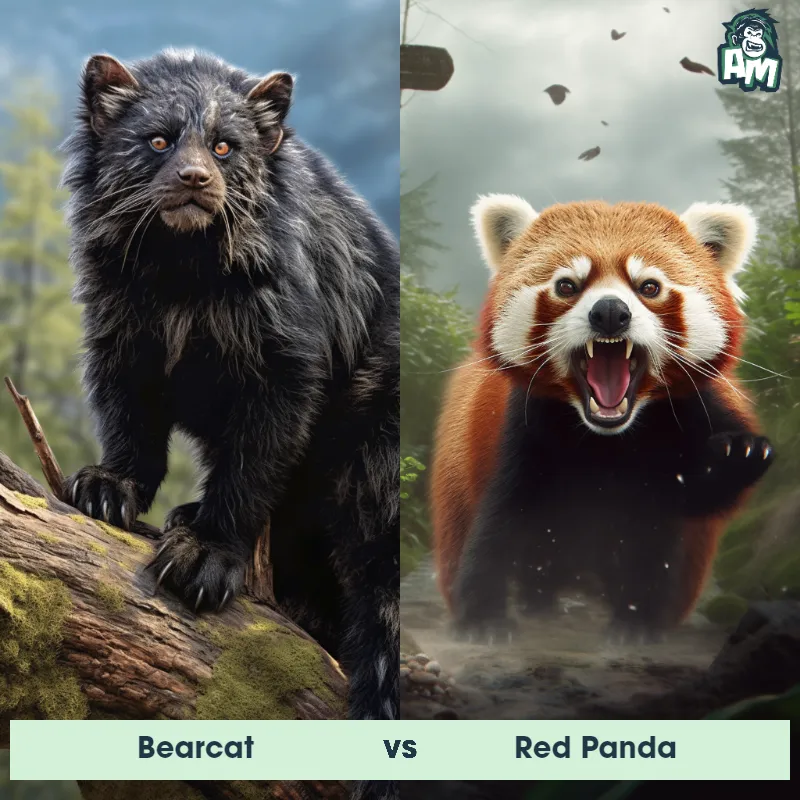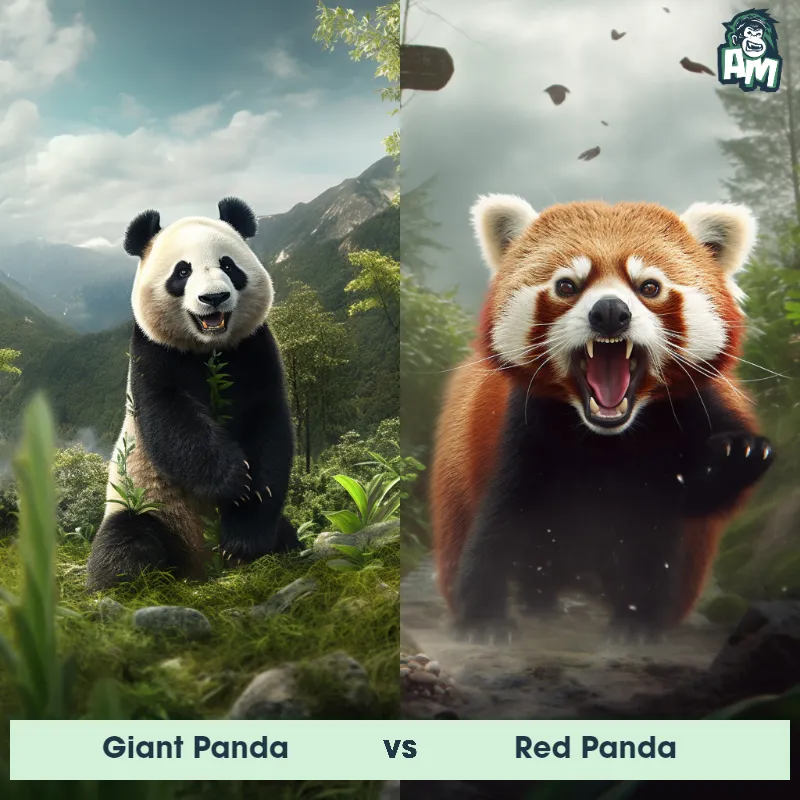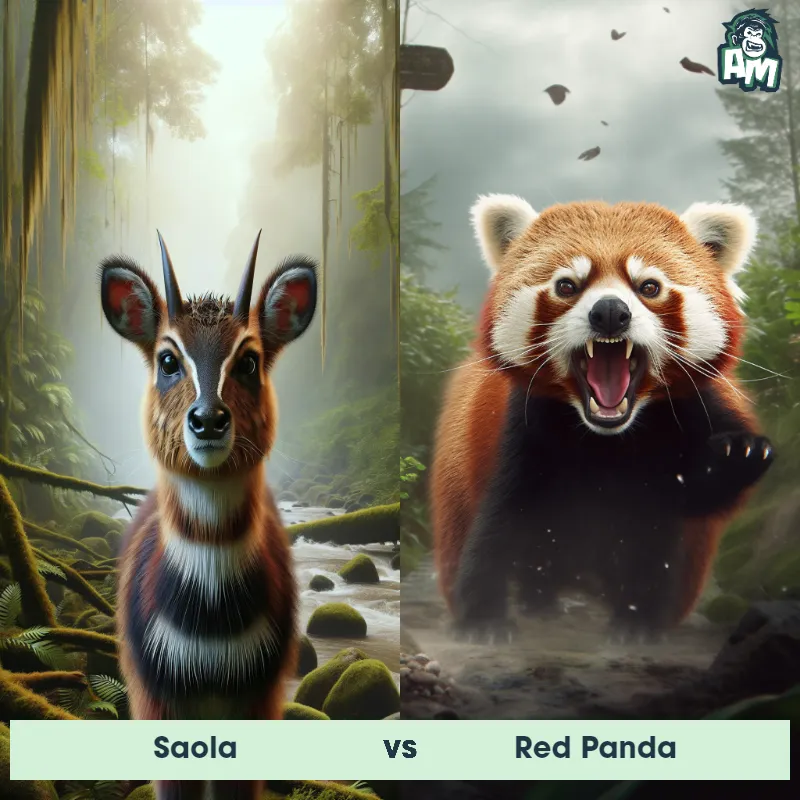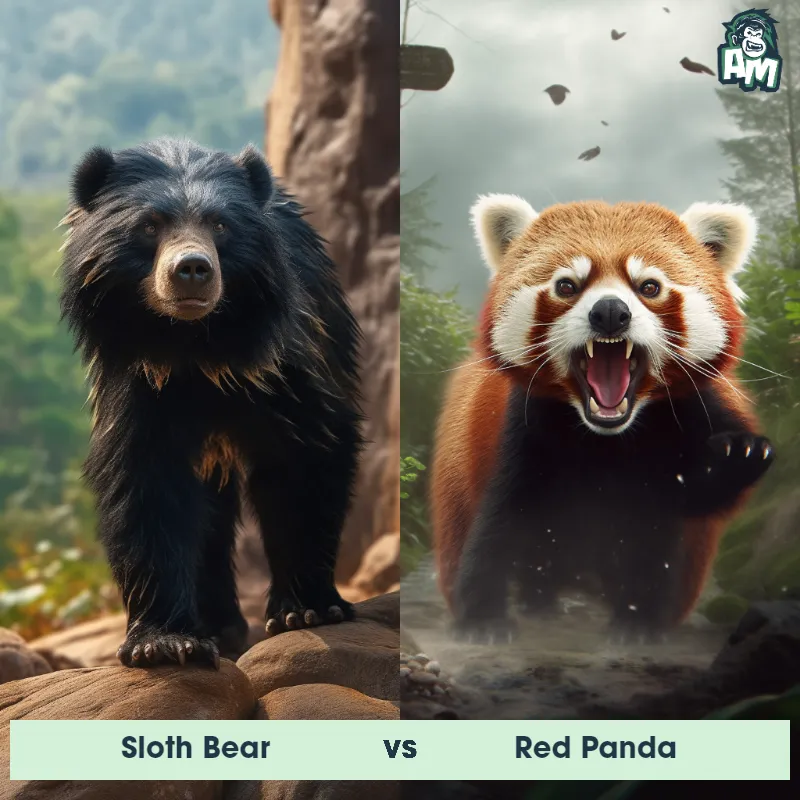The Red Panda
The Red Panda, also known as the Lesser Panda, is a small arboreal mammal native to the eastern Himalayas and southwestern China. It is characterized by its cat-like face, bushy tail, and reddish-brown fur with distinct white markings on its face, ears, and chest. Red Pandas have a unique extended wrist bone that acts as a thumb, allowing them to grasp objects with precision. They primarily feed on bamboo, but their diet also includes fruits, eggs, and insects. Red Pandas are solitary and mainly active during dawn and dusk.

| Red Panda | |
|---|---|
| Size | 20-26 inches (50-65 cm) |
| Weight | 6.6-13.2 pounds (3-6 kg) |
| Speed | NA |
| Key Strength | Climbing and agility |
| Biggest Weakness | Physical strength |
| Scientific Name | Ailurus fulgens |
| Family | Ailuridae |
| Habitat | Forests |
| Geography | Eastern Himalayas and southwestern China |
| Diet | Bamboo, fruits, insects, and small animals |
| Lifespan | 8 years - 14 years |

The Red Panda
The Red Panda, also known as the Lesser Panda, is a small arboreal mammal native to the eastern Himalayas and southwestern China. It is characterized by its cat-like face, bushy tail, and reddish-brown fur with distinct white markings on its face, ears, and chest. Red Pandas have a unique extended wrist bone that acts as a thumb, allowing them to grasp objects with precision. They primarily feed on bamboo, but their diet also includes fruits, eggs, and insects. Red Pandas are solitary and mainly active during dawn and dusk.
Fun Fact: The Red Panda's scientific name "Ailurus fulgens" means "shining cat," which refers to the animal's bright reddish fur.
| Red Panda | |
|---|---|
| Size | 20-26 inches (50-65 cm) |
| Weight | 6.6-13.2 pounds (3-6 kg) |
| Speed | NA |
| Key Strength | Climbing and agility |
| Biggest Weakness | Physical strength |
| Scientific Name | Ailurus fulgens |
| Family | Ailuridae |
| Habitat | Forests |
| Geography | Eastern Himalayas and southwestern China |
| Diet | Bamboo, fruits, insects, and small animals |
| Lifespan | 8 years - 14 years |
Match Highlights
Red Panda Matchups
We use AI to simulate matchups between the Red Panda and other animals. Our simulation considers size, strength, and natural predatory behaviors to determine the most likely outcome.
Red Panda: Diet, Predators, Aggression, and Defensive Behaviors
What do Red Pandas eat?
Red Pandas are primarily herbivores, with their diet consisting mainly of bamboo, fruits, acorns, and roots. They also occasionally consume small mammals, birds, eggs, and insects to supplement their diet.
Do Red Pandas have any predators?
Red Pandas are preyed upon by large carnivores such as snow leopards and martens. They are vulnerable to these predators due to their small size and relatively slow speed.
Are Red Pandas aggressive?
Red Pandas are typically solitary and shy animals, and they are not known for being aggressive. However, they may display defensive behaviors if they feel threatened or cornered.
Do Red Pandas fight?
Red Pandas are not known for engaging in frequent fights with other animals. They are more likely to try to flee or climb trees to escape from potential threats rather than resorting to physical confrontation.
How do Red Pandas defend themselves?
When faced with a predator or threat, Red Pandas rely on their agility and climbing skills to escape. They are excellent climbers and can quickly ascend trees to evade danger. Additionally, they may emit sharp calls or hisses to intimidate predators.
What is the Red Panda's biggest weakness in a fight?
The Red Panda's small size and relatively fragile build make it vulnerable in a physical altercation with larger predators. Their main defensive strategy is to avoid confrontation altogether by retreating to the safety of trees.
Fun Fact: Despite its name, the Red Panda is actually not closely related to the Giant Panda and belongs to its own distinct family, Ailuridae.
Fun Fact: Red Pandas have a high sensitivity to temperature, and during winter, they have the ability to lower their metabolic rate and conserve energy, which helps them survive in cold mountainous regions.



